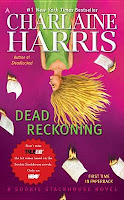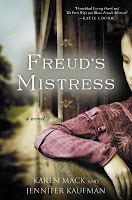Barn Door, 2013
Click image to enlarge. For more Wordless Wednesday, click here.
 How would you like to spend the summer on the coast of Maine with your extended family? Imagine that you're only thirteen, an only child, and the youngest of your ten cousins; what would you do to fit in with the other kids? Richard Killing has at least one trait his Hatfield cousins like: He is an expert eavesdropper. What will Richard do with the information he acquires?
How would you like to spend the summer on the coast of Maine with your extended family? Imagine that you're only thirteen, an only child, and the youngest of your ten cousins; what would you do to fit in with the other kids? Richard Killing has at least one trait his Hatfield cousins like: He is an expert eavesdropper. What will Richard do with the information he acquires?The summer when I was thirteen years old changed everything for me. Looking back on it now, I can fill in the gaps with what I learned later, but at the time it seemed like a story unto itself, and that is the way I want to tell it. When I got back to school in September, I thought to myself, "I've been through hell this past month, and not one of you knows a godamn thing about it." I'd picked up swearing that summer, but it wasn't the worst thing I had picked up, and it wasn't the most lasting. What I like to remember best are the mornings in Uncle Kurt's room when he would regale me with tales of the war. But what I remember most vividly is a bright patch of flames surrounding something so horrible I couldn't bear to look at it. That comes at the end. I will take my time getting there.—Shorecliff by Ursula DeYoung (Hachette Book Group / Little, Brown, 2013, p. 1)
 I am so bad with finishing series that I'm still
behind in the Sookie Stackhouse (Southern Vampire) series by Charlaine
Harris. I decided a few days ago that I would do my best to catch up. I
had three books left and managed to listen to two and have already
started on the last.
I am so bad with finishing series that I'm still
behind in the Sookie Stackhouse (Southern Vampire) series by Charlaine
Harris. I decided a few days ago that I would do my best to catch up. I
had three books left and managed to listen to two and have already
started on the last. In Dead Reckoning and Deadlocked,
Sookie, Eric, and the gang get involved in the affairs of other
creatures, which leads to murder, revenge, and some tricky schemes to
try to set things right. Meanwhile, vampire law and politics are
threatening Sookie and Eric's relationship, and Sookie was forced to
decide what to do with a few things she had inherited.
In Dead Reckoning and Deadlocked,
Sookie, Eric, and the gang get involved in the affairs of other
creatures, which leads to murder, revenge, and some tricky schemes to
try to set things right. Meanwhile, vampire law and politics are
threatening Sookie and Eric's relationship, and Sookie was forced to
decide what to do with a few things she had inherited. Weekend Cooking is open to anyone who has any kind of food-related post to share: Book (novel, nonfiction) reviews, cookbook reviews, movie reviews, recipes, random thoughts, gadgets, quotations, photographs. If your post is even vaguely foodie, feel free to grab the button and link up anytime over the weekend. You do not have to post on the weekend. Please link to your specific post, not your blog's home page. For more information, see the welcome post.
Weekend Cooking is open to anyone who has any kind of food-related post to share: Book (novel, nonfiction) reviews, cookbook reviews, movie reviews, recipes, random thoughts, gadgets, quotations, photographs. If your post is even vaguely foodie, feel free to grab the button and link up anytime over the weekend. You do not have to post on the weekend. Please link to your specific post, not your blog's home page. For more information, see the welcome post. Dublin-born Katie Quinn Davies has a background in graphic design and doesn't come from a particularly foodie family. But when an opportunity came for her to change careers, after she moved to her husband's native Australia, she decided her future was in the kitchen. After a series of false starts, she found a way to join two passions by becoming a food photographer and stylist.
Dublin-born Katie Quinn Davies has a background in graphic design and doesn't come from a particularly foodie family. But when an opportunity came for her to change careers, after she moved to her husband's native Australia, she decided her future was in the kitchen. After a series of false starts, she found a way to join two passions by becoming a food photographer and stylist. Even though she was born and raised in Ireland and lives in Sydney, her ingredients are universal. I doubt anyone would have trouble finding the necessary components of any of her dishes. Davies is aware that she has an international audience, so when, for example, a particular type of Pacific fish is called for, she tells us any firm white variety will do.
Even though she was born and raised in Ireland and lives in Sydney, her ingredients are universal. I doubt anyone would have trouble finding the necessary components of any of her dishes. Davies is aware that she has an international audience, so when, for example, a particular type of Pacific fish is called for, she tells us any firm white variety will do. Slow-Roasted Tomatoes with Manchego
Slow-Roasted Tomatoes with Manchego Welcome to Imprint Friday and today's featured imprint: Picador USA.
Stop by each week to be introduced to a must-read title
from one of my favorite imprints. I know you'll
be adding many of these books to your wish
list.
Welcome to Imprint Friday and today's featured imprint: Picador USA.
Stop by each week to be introduced to a must-read title
from one of my favorite imprints. I know you'll
be adding many of these books to your wish
list.Orphaned after the death of her mother, eighteen-year-old Esther Chambers heads west in search of her only living relative. In the lawless town of Century, Oregon, she’s met by her distant cousin—a cattle rancher named Ferris Pickett. There, she begins a new life as a homesteader, in the hope that her land will one day join Pick’s impressive spread.Although the summary makes Little Century sound like a historical romance, the novel is really about life on the Oregon high desert during the waning days of the old frontier. Two aspects of Keesey's writing stood out sharply for me: her characters and her ability to capture the environment.
But Century is in the midst of an escalating and violent war over water and rangeland. As incidents between the sheep and cattle ranchers turn to bloodshed, Esther’s sympathies are divided between her cousin and a sheepherder named Ben Cruff, sworn enemy of the cattlemen. Torn between her growing passion for Ben and her love of the austere land, she begins to realize that she can’t be loyal to both.
 Picador USA is a featured imprint on Beth Fish Reads. For more information about the imprint, visit the Picador's website.
While there, take a look at the Picador book club and reading
guides and sign up for their newsletters. For up-to-date news, don't
miss their Tumblr site or Facebook page and follow them on Twitter.
Picador USA is a featured imprint on Beth Fish Reads. For more information about the imprint, visit the Picador's website.
While there, take a look at the Picador book club and reading
guides and sign up for their newsletters. For up-to-date news, don't
miss their Tumblr site or Facebook page and follow them on Twitter. Twin
sisters Vi and Kate couldn't be more different. Kate has chosen a
conventional path of work, marriage, and motherhood. Vi, however, has
never moved past her hippie days and has shunned traditional
relationships and a middle-of-the road career. What they do share,
however, is an innate sensitivity to psychic phenomena, although Kate is
careful to keep her abilities buried deep inside. When Vi publicly
announces that their native St. Louis will be the epicenter of a major
earthquake, even predicting a date, the sisters' lives begin to spin out
of control. Curtis Sittenfeld's Sisterland explores a
number of contemporary issues, from the alarmist media to family
relationships. The audiobook (Random House Audio; 14 hr, 59 min) is
brilliantly read by Rebecca Lowman. She not only does an amazing job
with the wide range of needed characterizations but also keeps the
tension building as the predicted day of the natural disaster
approaches. I recommend the novel for those who like contemporary
stories about family relationships, marriage, twins, and parenthood. It
would also make a good book club pick.
Twin
sisters Vi and Kate couldn't be more different. Kate has chosen a
conventional path of work, marriage, and motherhood. Vi, however, has
never moved past her hippie days and has shunned traditional
relationships and a middle-of-the road career. What they do share,
however, is an innate sensitivity to psychic phenomena, although Kate is
careful to keep her abilities buried deep inside. When Vi publicly
announces that their native St. Louis will be the epicenter of a major
earthquake, even predicting a date, the sisters' lives begin to spin out
of control. Curtis Sittenfeld's Sisterland explores a
number of contemporary issues, from the alarmist media to family
relationships. The audiobook (Random House Audio; 14 hr, 59 min) is
brilliantly read by Rebecca Lowman. She not only does an amazing job
with the wide range of needed characterizations but also keeps the
tension building as the predicted day of the natural disaster
approaches. I recommend the novel for those who like contemporary
stories about family relationships, marriage, twins, and parenthood. It
would also make a good book club pick. Although Rob Buyea's Because of Mr. Terupt
was published in 2010 to much acclaim and starred reviews, the
audiobook edition was released only recently (Tantor Audio; 4 hr, 10
min). This charming novel follows seven fifth-graders as they are get to
know and then are changed by the school's newest
teacher, Mr. Terupt, who has an unusual way of bringing out the
best in his students. Each child has a unique personality (for example,
one is shy, one is a bully, and one is a prankster), and the story is
told alternately through their eyes. Buyea captures the inner essence of
each student as he or she begins to blossom under Mr. Terupt's
tutelage. When an accident puts their teacher out of commission, the
children are deeply and differently affected. Arielle DeLisle (who
reads the girls' chapters) and Mike Chamberlain (who takes on the boys)
make a wonderful narrative team and are especially talented at
projecting the students' maturation and changes over the course of the
school year. This short middle grade novel will win over kids and adults
alike, making it a great family listen. The book is a wonderful tribute
to special teachers who devote themselves to giving their students more
than just book learning.
Although Rob Buyea's Because of Mr. Terupt
was published in 2010 to much acclaim and starred reviews, the
audiobook edition was released only recently (Tantor Audio; 4 hr, 10
min). This charming novel follows seven fifth-graders as they are get to
know and then are changed by the school's newest
teacher, Mr. Terupt, who has an unusual way of bringing out the
best in his students. Each child has a unique personality (for example,
one is shy, one is a bully, and one is a prankster), and the story is
told alternately through their eyes. Buyea captures the inner essence of
each student as he or she begins to blossom under Mr. Terupt's
tutelage. When an accident puts their teacher out of commission, the
children are deeply and differently affected. Arielle DeLisle (who
reads the girls' chapters) and Mike Chamberlain (who takes on the boys)
make a wonderful narrative team and are especially talented at
projecting the students' maturation and changes over the course of the
school year. This short middle grade novel will win over kids and adults
alike, making it a great family listen. The book is a wonderful tribute
to special teachers who devote themselves to giving their students more
than just book learning. When Philip Caputo
looked his seventieth birthday square in the eye, he decided it was
time to fulfill one of his long-time dreams: drive across America . . .
the long way. Starting at the tip of Key West, the southernmost point of
continental United States, and making his way all the way to the Arctic
Ocean, at the end of the country's northernmost road, Caputo, his wife,
and two dogs saw America as few ever do. But Caputo's journey, told in The Longest Road,
was more than just a vacation; he set out to discover what holds this
vast country together, especially in the current climate of political
strife. Throughout the trip, he posed the question to the people he met,
and their answers may surprise you. Caputo also shares his adventures,
including encounters with wildlife and the weather. The audiobook
(Highbridge Audio; 11 hr, 49 min) is narrated by Pete Larkin, who takes a
conversational approach, which fits the story perfectly. He is a master
at the necessary regional accents and enhances the story's great mix of
humor, wonder, and drama. Whether you have the travel bug or like to
stay safely inside, you'll be fascinated by Caputo's 16,000-mile trip
and the people and places he saw along the way.
When Philip Caputo
looked his seventieth birthday square in the eye, he decided it was
time to fulfill one of his long-time dreams: drive across America . . .
the long way. Starting at the tip of Key West, the southernmost point of
continental United States, and making his way all the way to the Arctic
Ocean, at the end of the country's northernmost road, Caputo, his wife,
and two dogs saw America as few ever do. But Caputo's journey, told in The Longest Road,
was more than just a vacation; he set out to discover what holds this
vast country together, especially in the current climate of political
strife. Throughout the trip, he posed the question to the people he met,
and their answers may surprise you. Caputo also shares his adventures,
including encounters with wildlife and the weather. The audiobook
(Highbridge Audio; 11 hr, 49 min) is narrated by Pete Larkin, who takes a
conversational approach, which fits the story perfectly. He is a master
at the necessary regional accents and enhances the story's great mix of
humor, wonder, and drama. Whether you have the travel bug or like to
stay safely inside, you'll be fascinated by Caputo's 16,000-mile trip
and the people and places he saw along the way. Do
you believe in reincarnation? What would you think if you started
having vivid images of yourself in other places, other bodies, other
times? For mythologist Jac L'Etoile, it comes down to believing in past
lives or accepting that she may have deep psychological problems. Will a
trip to the island of Jersey and the discovery of a lost journal of
Victor Hugo help her find peace?
Do
you believe in reincarnation? What would you think if you started
having vivid images of yourself in other places, other bodies, other
times? For mythologist Jac L'Etoile, it comes down to believing in past
lives or accepting that she may have deep psychological problems. Will a
trip to the island of Jersey and the discovery of a lost journal of
Victor Hugo help her find peace?Every story begins with a tremble of anticipation. At the start we may have an idea of our point of arrival, but what lies before us and makes us shudder is the journey, for that is all discovery. This strange and curious story begins for me at the sea. Its sound and scent are my punctuation. Its movements are my verbs. As I write this, angry waves break upon the rocks, and when the water recedes, the rocks seem to be weeping.—Seduction by M. J. Rose (Simon & Schuster / Atria Books, 2013, p. 1)
 Remember when I introduced you to the Scholastic Mother Daughter Book Club
for middle readers? I'm committed to featuring or reviewing all
the books selected for this club because I think Scholastic has
picked winning titles that have broad appeal.
Remember when I introduced you to the Scholastic Mother Daughter Book Club
for middle readers? I'm committed to featuring or reviewing all
the books selected for this club because I think Scholastic has
picked winning titles that have broad appeal. Eleven-year-old
Sam is feeling sick for the third time, and his doctors have run out of
treatment ideas. Although most children go into permanent remission, a
few kids with acute lymphoblastic leukemia die young. Sam is aware that
his chances of reaching his teens are very slim, but he still wants to
live as normal of a life as possible for as long as possible.
Eleven-year-old
Sam is feeling sick for the third time, and his doctors have run out of
treatment ideas. Although most children go into permanent remission, a
few kids with acute lymphoblastic leukemia die young. Sam is aware that
his chances of reaching his teens are very slim, but he still wants to
live as normal of a life as possible for as long as possible. Fantasy
and animal lovers will quickly fall in love with Soren, a barn owl born
to two loving parents. But when sibling rivalry puts Soren in the path
of evil birds, he is kidnapped and transported to the St. Aegolius
Academy for Orphaned Owls. The academy, however, is no ordinary school;
it's really a place where nestlings are brainwashed and trained to be
laborers and soldiers as part of the rebel birds' scheme to rule the owl
kingdoms. Will Soren be able to keep his senses in tact and learn to
fly in time to escape?
Fantasy
and animal lovers will quickly fall in love with Soren, a barn owl born
to two loving parents. But when sibling rivalry puts Soren in the path
of evil birds, he is kidnapped and transported to the St. Aegolius
Academy for Orphaned Owls. The academy, however, is no ordinary school;
it's really a place where nestlings are brainwashed and trained to be
laborers and soldiers as part of the rebel birds' scheme to rule the owl
kingdoms. Will Soren be able to keep his senses in tact and learn to
fly in time to escape? Mama.
Mama. Weekend Cooking is open to anyone who has any kind of food-related post to share: Book (novel, nonfiction) reviews, cookbook reviews, movie reviews, recipes, random thoughts, gadgets, quotations, photographs. If your post is even vaguely foodie, feel free to grab the button and link up anytime over the weekend. You do not have to post on the weekend. Please link to your specific post, not your blog's home page. For more information, see the welcome post.
Weekend Cooking is open to anyone who has any kind of food-related post to share: Book (novel, nonfiction) reviews, cookbook reviews, movie reviews, recipes, random thoughts, gadgets, quotations, photographs. If your post is even vaguely foodie, feel free to grab the button and link up anytime over the weekend. You do not have to post on the weekend. Please link to your specific post, not your blog's home page. For more information, see the welcome post. Although it isn't yet National Zucchini Day yet (that's August 8, in case you were wondering), I thought I'd devote this week's post to that ubiquitous summer squash.
Although it isn't yet National Zucchini Day yet (that's August 8, in case you were wondering), I thought I'd devote this week's post to that ubiquitous summer squash. Welcome to Imprint Friday and today's featured imprint: Amy Einhorn Books.
Stop by each week to be introduced to a must-read
title from one of my favorite imprints. I know
you'll be adding many of these books to your wish
list.
Welcome to Imprint Friday and today's featured imprint: Amy Einhorn Books.
Stop by each week to be introduced to a must-read
title from one of my favorite imprints. I know
you'll be adding many of these books to your wish
list.It is fin-de-siècle Vienna and Minna Bernays, an overeducated lady’s companion with a sharp, wry wit, is abruptly fired, yet again, from her position. She finds herself out on the street and out of options. In 1895, the city may be aswirl with avant-garde artists and revolutionary ideas, yet a woman’s only hope for security is still marriage. But Minna is unwilling to settle. Out of desperation, she turns to her sister, Martha, for help. Martha has her own problems—six young children and an absent, disinterested husband who happens to be Sigmund Freud. At this time, Freud is a struggling professor, all but shunned by his peers and under attack for his theories, most of which center around sexual impulses. And while Martha is shocked and repulsed by her husband’s “pornographic” work, Minna is fascinated. Minna is everything Martha is not—intellectually curious, engaging, and passionate. She and Freud embark on what is at first simply an intellectual courtship, yet something deeper is brewing beneath the surface, something Minna cannot escape.Mack and Kaufman focus on the first couple of years after Minna moved in with the Freuds, when her relationship with Sigmund changed from companionable to something more. Without forgetting that Freud's work was important to the lives of the principal players, the authors do an excellent job shifting our attention to the less-well-known domestic side of the famous psychoanalyst and his family.
In this sweeping tale of love, loyalty, and betrayal—between a husband and a wife, between sisters—fact and fiction seamlessly blend together, creating a compelling portrait of an unforgettable woman and her struggle to reconcile her love for her sister with her obsessive desire for her sister’s husband, the mythic father of psychoanalysis.
 To learn more about Karen Hack and Jennifer Kaufman, visit the Freud's Mistress website, where you can see photographs of Sigmund, Martha, and Minna and read an excerpt from the book.
To learn more about Karen Hack and Jennifer Kaufman, visit the Freud's Mistress website, where you can see photographs of Sigmund, Martha, and Minna and read an excerpt from the book.  Have you read Debbie Macomber's Cedar Cove books? This best-selling series tells the story of the residents of Cedar Cove, Washington, one house at a time. At the core of each book is Olivia Lockhart, the town's judge.
Have you read Debbie Macomber's Cedar Cove books? This best-selling series tells the story of the residents of Cedar Cove, Washington, one house at a time. At the core of each book is Olivia Lockhart, the town's judge. I was so excited to be able to see a screener of the two-hour series premier. I liked it so much, I plan to watch the show again on Saturday. I don't want to give away any of the plot, but I can tell you that the setting and filming of Cedar Cove are beautiful. I want to move to that town!
I was so excited to be able to see a screener of the two-hour series premier. I liked it so much, I plan to watch the show again on Saturday. I don't want to give away any of the plot, but I can tell you that the setting and filming of Cedar Cove are beautiful. I want to move to that town! The Giveaway: To help celebrate the launch of Cedar Cove, the Hallmark Channel is offering one of my readers with a U.S. mailing address the following fabulous prize pack. One lucky person will receive a $15 Amazon Gift Card to start the Cedar Cove book series, a recyclable shopping tote; Debbie Macomber's 16 Lighthouse Road book, and a micro-fleece winter beanie (total prize pack valued at $45).
The Giveaway: To help celebrate the launch of Cedar Cove, the Hallmark Channel is offering one of my readers with a U.S. mailing address the following fabulous prize pack. One lucky person will receive a $15 Amazon Gift Card to start the Cedar Cove book series, a recyclable shopping tote; Debbie Macomber's 16 Lighthouse Road book, and a micro-fleece winter beanie (total prize pack valued at $45). What
if one of your friends were killed by the son of the richest, most
powerful family in your community? Would you seek revenge? Justice? When
Willa Ames-Rowan was found floating in the lake after an evening sail
with James Gregory, her friends Madge, Lina, Sloane, and Rose vow to expose the
murderer. Will they survive to reveal what they've uncovered?
What
if one of your friends were killed by the son of the richest, most
powerful family in your community? Would you seek revenge? Justice? When
Willa Ames-Rowan was found floating in the lake after an evening sail
with James Gregory, her friends Madge, Lina, Sloane, and Rose vow to expose the
murderer. Will they survive to reveal what they've uncovered?Willa Ames-Rowan never thought she would die. She firmly believed white should be worn before Labor Day, champagne was best enjoyed on an empty stomach, and sleep was for the weak. If it weren't for the inky black water tugging at her limbs, clawing its way into her mouth, she might have welcomed the dark solitude of Hawthorne Lake. She might have floated on her back, counting stars, dreaming about what it would be like to wake up next to her future husband. What it might be like to marry James Gregory.—This Is W.A.R. by Lisa Roecker and Laura Roecher (Soho Press / Soho Teen, 2013, p. 1)
 Many authors can write a good book, with believable characters and a well-developed plot. But only some are true storytellers, possessing the ability to create such a tangible world that I become lost in it, oblivious to my surroundings. Neil Gaiman is the latter sort of artist, and his The Ocean at the End of the Lane enchanted me from the start.
Many authors can write a good book, with believable characters and a well-developed plot. But only some are true storytellers, possessing the ability to create such a tangible world that I become lost in it, oblivious to my surroundings. Neil Gaiman is the latter sort of artist, and his The Ocean at the End of the Lane enchanted me from the start. Mama.
Mama. Weekend Cooking is open to anyone who has any kind of food-related post to share: Book (novel, nonfiction) reviews, cookbook reviews, movie reviews, recipes, random thoughts, gadgets, quotations, photographs. If your post is even vaguely foodie, feel free to grab the button and link up anytime over the weekend. You do not have to post on the weekend. Please link to your specific post, not your blog's home page. For more information, see the welcome post.
Weekend Cooking is open to anyone who has any kind of food-related post to share: Book (novel, nonfiction) reviews, cookbook reviews, movie reviews, recipes, random thoughts, gadgets, quotations, photographs. If your post is even vaguely foodie, feel free to grab the button and link up anytime over the weekend. You do not have to post on the weekend. Please link to your specific post, not your blog's home page. For more information, see the welcome post. I hope you won't throw me out of foodland if I confess that I've never seen The Chew. It's on during the day when I'm working, and I've never thought to record it or look for streaming options. As most of you know, Daphne Oz is a co-host of the show, but you might not have realized she has a book out.
I hope you won't throw me out of foodland if I confess that I've never seen The Chew. It's on during the day when I'm working, and I've never thought to record it or look for streaming options. As most of you know, Daphne Oz is a co-host of the show, but you might not have realized she has a book out. Yes, there's quite a lot of information here and much of it is useful. For example, I plan to try some of her green cleaning ideas. On the other hand, I'm not likely to follow her beauty and makeup routine. Other tips are ones you've heard before, such as culling your wardrobe every season.
Yes, there's quite a lot of information here and much of it is useful. For example, I plan to try some of her green cleaning ideas. On the other hand, I'm not likely to follow her beauty and makeup routine. Other tips are ones you've heard before, such as culling your wardrobe every season. In addition, I noticed a few recipes were introduced with phrases such as "ready in 10 minutes," but the first sentence in the instructions would say something like "let soak for 20 minutes to 2 hours." That 10 minutes was a little misleading. Finally, although all the recipes are easy enough for anyone with some kitchen experience, some of the instructions were not well ordered in terms of efficiency. For instance, a quiche recipe has you saute veggies and then prebake the crust; I'd put the crust in the oven and then use that time to cook the filling.
In addition, I noticed a few recipes were introduced with phrases such as "ready in 10 minutes," but the first sentence in the instructions would say something like "let soak for 20 minutes to 2 hours." That 10 minutes was a little misleading. Finally, although all the recipes are easy enough for anyone with some kitchen experience, some of the instructions were not well ordered in terms of efficiency. For instance, a quiche recipe has you saute veggies and then prebake the crust; I'd put the crust in the oven and then use that time to cook the filling. Welcome to Imprint Friday and today's featured imprint: Riverhead Books. Stop by each week to be introduced to a must-read title from one of my favorite imprints. I know you'll be adding many of these books to your wish list.
Welcome to Imprint Friday and today's featured imprint: Riverhead Books. Stop by each week to be introduced to a must-read title from one of my favorite imprints. I know you'll be adding many of these books to your wish list.Can a song change a nation? In 1964, Marvin Gaye, record producer William “Mickey” Stevenson, and Motown songwriter Ivy Jo Hunter wrote “Dancing in the Street.” The song was recorded at Motown’s Hitsville USA Studio by Martha and the Vandellas, with lead singer Martha Reeves arranging her own vocals. Released on July 31, the song was supposed to be an upbeat dance recording—a precursor to disco, and a song about the joyousness of dance. But events overtook it, and the song became one of the icons of American pop culture. The Beatles had landed in the U.S. in early 1964. By the summer, the sixties were in full swing. The summer of 1964 was the Mississippi Freedom Summer, the Berkeley Free Speech Movement, the beginning of the Vietnam War, the passage of the Civil Rights Act, and the lead-up to a dramatic election. As the country grew more radicalized in those few months, “Dancing in the Street” gained currency as an activist anthem. The song took on new meanings, multiple meanings, for many different groups that were all changing as the country changed. Told by the writer who is legendary for finding the big story in unlikely places, Ready for a Brand New Beat chronicles that extraordinary summer of 1964 and showcases the momentous role that a simple song about dancing played in history.First, a personal note. Being a baby boomer who grew up just across the state line from Michigan, about an hour from Detroit, means I have a soft spot in my heart for Motown. After all, I spent the formative years of my life falling asleep with a transistor radio (my generation's iPod) under my pillow. The station? CKLW, "Home of the Motown Sound." For years after I left Ohio, being in reception distance of CKLW, meant being close to home. In the early 1970s, on Christmas break from college, my brother, friends, and I even took a road trip across the Ambassador Bridge into Canada to visit the station. We were serious fans.
By the end of the summer of 1964, the entire tone of the 1960s had changed: America was almost a different country, and "Dancing in the Street," born on the cusp, one of the few Motown songs that was not about love and heartache, was going to make the transition to the new and much more harsh America. (p. 156; uncorrected proofs)Kurlansky covers quite a bit of material, but I was particularly interested in Martha Reeves's take on the song that made her famous. Protected in what was known as the Motown Bubble, Reeves was apolitical. She wanted to sing and entertain. She was less concerned about the activist civil rights movement than she was in bringing people together through her music. For her, "Dancing in the Streets" was a reminder of her childhood, it was call to neighborhood kids to get together on hot (pre-air-conditioning) nights to listen to music, dance, and have fun.
 For more about Mark Kurlansky, visit his website, where you can learn about his books, read his blog, and check out his tour schedule.
For more about Mark Kurlansky, visit his website, where you can learn about his books, read his blog, and check out his tour schedule.  Few
people know the name Mary Frances Gerety, but almost everyone knows her
work. In 1947, desperate for an ad campaign slogan for De Beers, Gerety
scribbled down four words that would eventually affect marriages around
the world: A diamond is forever.
Few
people know the name Mary Frances Gerety, but almost everyone knows her
work. In 1947, desperate for an ad campaign slogan for De Beers, Gerety
scribbled down four words that would eventually affect marriages around
the world: A diamond is forever. What's
a small-town copper to do? Poor Hamish Macbeth has an abscessed tooth
and the pain is killing him. But when he gets to the dentist's office, he
discovers a real killing: the dentist is dead in his chair. Murder, a
robbery, and some funny business with a young girl have Hamish stumped.
How is he going to solve all those crimes when his tooth hurts so much
he can barely think? Thank goodness a neighbor has taken pity on him and
invited him home for tea:
What's
a small-town copper to do? Poor Hamish Macbeth has an abscessed tooth
and the pain is killing him. But when he gets to the dentist's office, he
discovers a real killing: the dentist is dead in his chair. Murder, a
robbery, and some funny business with a young girl have Hamish stumped.
How is he going to solve all those crimes when his tooth hurts so much
he can barely think? Thank goodness a neighbor has taken pity on him and
invited him home for tea:The cats had followed Hamish from the bathroom. One began to affectionately sharpen its claws on his trouser leg and he resisted an impulse to knock it across the kitchen. Angela was very fond of her cats and Hamish was fond of Angela.—Death of a Dentist by M. C. Beaton (Hachette Book Group / Grand Central Publishing, 1998, p. 19 [originally published 1997])